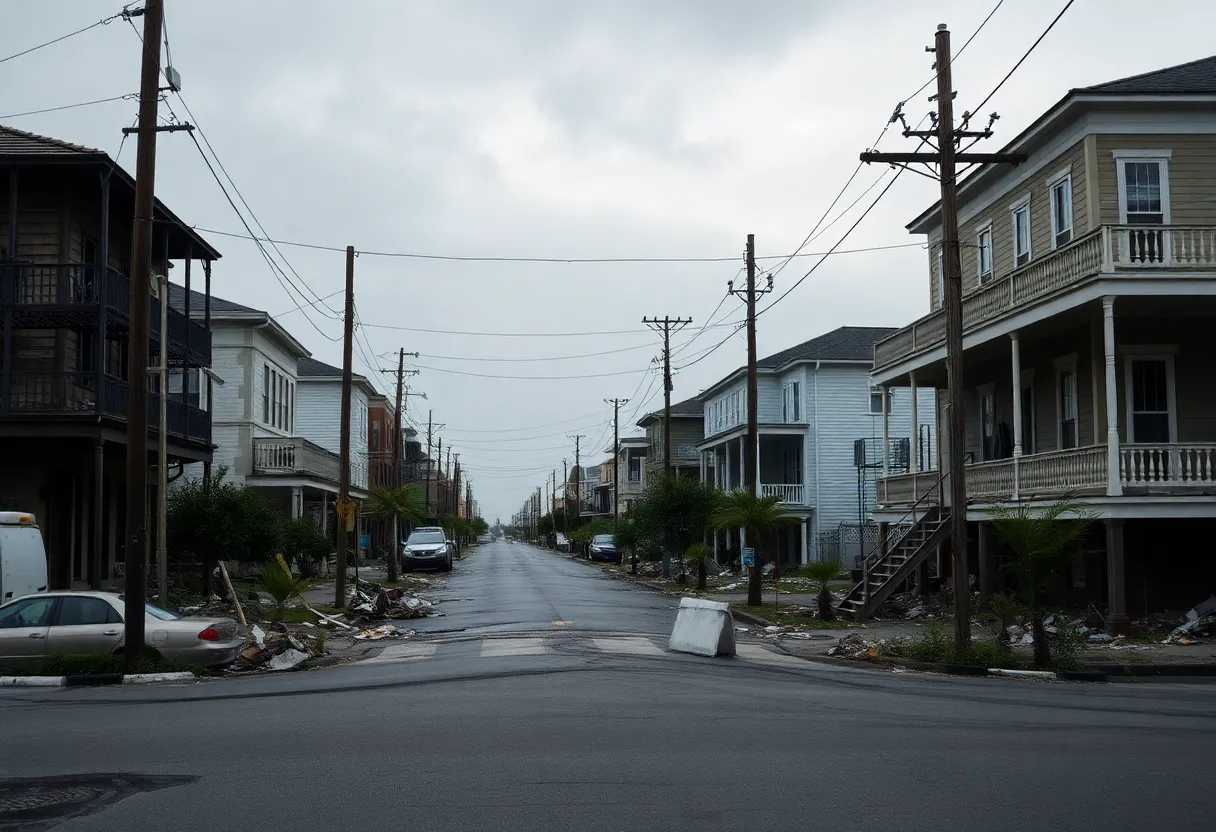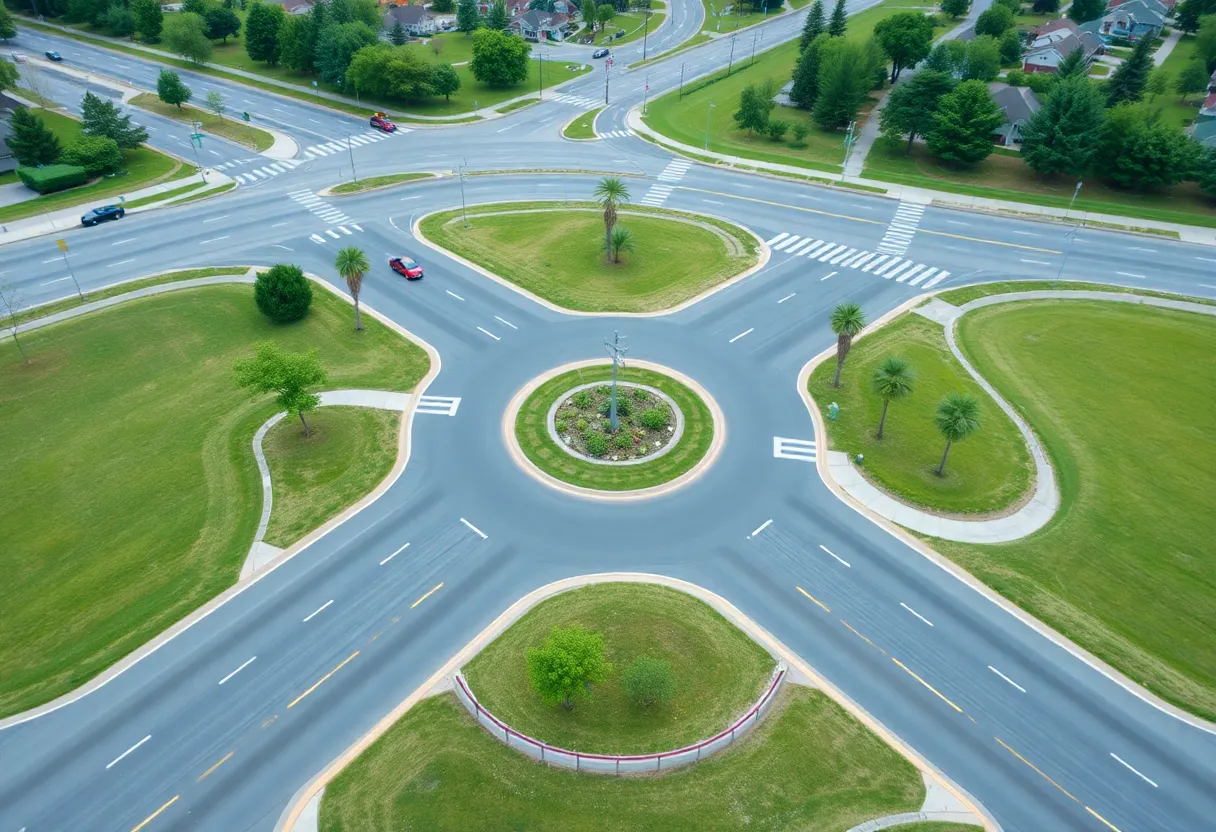News Summary
As New Orleans commemorates the twentieth anniversary of Hurricane Katrina, the storm’s lasting effects continue to resonate within Black communities. The catastrophic event resulted in significant loss of life, extensive property damage, and highlighted systemic social injustices. Efforts towards recovery aim to address the deep-rooted inequalities that were intensified by the disaster. As the city reflects on two decades past, the stories of resilience emerge alongside the pressing need for equitable recovery.
New Orleans
As New Orleans marks the twentieth anniversary of Hurricane Katrina, the storm continues to cast a long shadow over the city and the surrounding Black communities. Striking on August 29, 2005, Katrina remains the most expensive hurricane in U.S. history, with damages estimated at $170 billion. The widespread devastation submerged over 80 percent of New Orleans and affected more than one million homes.
Katrina is recorded as the fourth deadliest hurricane in American history, resulting in approximately 1,500 deaths in Louisiana alone. Various factors contributed to these fatalities, with 40 percent resulting from drowning, 25 percent from injuries and trauma, and 11 percent from heart-related conditions. In the chaotic aftermath, around 1.5 million people evacuated their homes in Louisiana, Alabama, and Mississippi. However, about 40 percent of those evacuees were unable to return due to extensive property damage.
Five months after the disaster, reports revealed that 987 individuals were still unaccounted for. The Federal Emergency Management Agency (FEMA) faced significant criticism for its response, including rumors of detainment camps, which were denied by the agency.
Impact on Black Communities
The storm’s impact on Black communities reveals entrenched social injustices. Migratory patterns of Black Americans during the 1950s and 1960s created systemic inequities, as inadequate public housing was often constructed in vulnerable, flood-prone areas. The aftermath of Katrina exposed long-standing issues related to racial and economic inequality, with Black communities enduring the harshest consequences of the storm, further aggravated by outdated infrastructure.
Efforts to rebuild highlighted the need for addressing the root causes of persistent social issues, such as healthcare access and environmental justice. The documentary “Hope in High Water: A People’s Recovery Twenty Years After Hurricane Katrina” delves into the ongoing challenges faced by these affected communities and their resilience to adversity.
Adequacy of the Evacuation Response
In light of the catastrophic events, animals were also significantly impacted, with approximately 259,400 families owning pets prior to the storm. An estimated 104,000 pets were abandoned, leading to around 60,000 animal fatalities. This crisis prompted the passage of the Pet Evacuation Bill, establishing guidelines for including pets in future evacuation plans to prevent similar tragedies.
Additional complications arose as Hurricane Rita impacted the Gulf Coast only weeks after Katrina, resulting in further distress and loss of life for already devastated communities. Some evacuees found themselves relocating significant distances; notably, 25 percent moved more than 450 miles away from their original homes.
Political Fallout
The governmental response faced scrutiny, leading to significant political fallout. New Orleans Mayor Ray Nagin experienced backlash regarding his handling of the crisis and later faced conviction for corruption during his time in office. Louisiana Governor Kathleen Blanco also saw her career adversely affected due to perceptions of inadequacies in her emergency response.
Long-term Consequences
Despite efforts on multiple fronts, many continue to grapple with the lasting impacts of Hurricane Katrina. By 2025, hundreds of individuals are still considered missing in connection with the hurricane. The storm’s legacy serves as a grim reminder of the fragility of infrastructure and the critical need for equitable recovery efforts across the socio-economic spectrum.
Ultimately, as New Orleans reflects on two decades since the catastrophic event, the enduring stories of survival and resilience underscore the necessity of addressing the systemic issues that contributed to the disaster’s disproportionate effects on marginalized communities.
Deeper Dive: News & Info About This Topic
HERE Resources
Greater New Orleans Companies Shine on Inc. 5000 List
New Orleans Commemorates 20 Years Since Hurricane Katrina
NOPD Officer Arrested on Prostitution Charges in Murder Probe
New Orleans Gears Up for Competitive Mayoral Election
Reforms in New Orleans Public Education Ahead of 2025-26
New Orleans Education Landscape Transforms for 2025-26
Search for Discarded Court Records Sparks Outrage in New Orleans
Amtrak to Launch Mardi Gras Service Between New Orleans and Mobile
Free Disaster Preparedness Workshops Launched in New Orleans
New Orleans Implements Changes for School Success
Additional Resources
- The Root: Untold Facts About Hurricane Katrina
- Encyclopedia Britannica: Hurricane Katrina
- KPEL: Hurricane Katrina 20 Years Later
- NOLA: Katrina Film by Former New Orleans Reporter
- The Guardian: Hurricane Katrina Docuseries
- Google Search: Hurricane Katrina

Author: STAFF HERE NEWORLEANS WRITER
The NEW ORLEANS STAFF WRITER represents the experienced team at HERENewOrleans.com, your go-to source for actionable local news and information in New Orleans, Orleans Parish, and beyond. Specializing in "news you can use," we cover essential topics like product reviews for personal and business needs, local business directories, politics, real estate trends, neighborhood insights, and state news affecting the area—with deep expertise drawn from years of dedicated reporting and strong community input, including local press releases and business updates. We deliver top reporting on high-value events such as French Quarter Festival, New Orleans Jazz & Heritage Festival, and Essence Music Festival. Our coverage extends to key organizations like the New Orleans Chamber of Commerce and Greater New Orleans, Inc., plus leading businesses in energy, healthcare, and education that power the local economy such as Entergy, Ochsner Health, and Tulane University. As part of the broader HERE network, including HEREShreveport.com, we provide comprehensive, credible insights into Louisiana's dynamic landscape.




